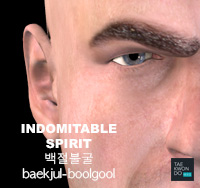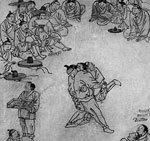Taekwondo 태권도Taekwondo Preschool
Korean martial arts are military practices and methods which have their place in the history of Korea but have been adapted for use by both military and non-military personnel as a method of personal growth or recreation.
About Kong Soo Do 공수도
Korean martial arts are military practices and methods which have their place in the history of Korea but have been adapted for use by both military and non-military personnel as a method of personal growth or recreation.
Kong Soo Do (공수도) is a Korean martial art. Its name is composed of the Korean pronunciation of the Chinese characters for "karate-do". In English it means "empty-hand way". However, it is different from karate-do. It is influenced by individual backgrounds of instructors.
"Chosun Yun Moo Kwan Kong Soo Do Bu" and "YMCA Kwon Bop Bu", Two of the original five Kwans used the Kong So Do name in its youth. They were "Chosun Yun Moo Kwan Kong Soo Do Bu" which later changed its name to "Jidokwan", and the YMCA Kwon Bop Bu, which later changed its name to Chang Moo Kwan. Yun Moo Kwan's founder Chun Sang Sup learned Okinawan Karate from Gichin Funakoshi. Chun had a very close relationship with Yoon, Byung-In who founder of YMCA Kwon Bop Bu. Chun and Yoon would travel to train with other martial artists, sometimes traveling to Manchuria. They trained with each other so much that they became known as brothers. Chun went missing during the Korean War; subsequently, this kwan voted to change its name to Jidokwan. After Chun disappeared in Korean War, the original students of Chun voted Master Yon who Trained in Chuan Fa in Manchuria as Jidokwan 1st President.
Kwon Bop Bu/Chang Moo Kwan - founded in 1947 by Byung In Yoon who had studied Chinese kung fu (chu'an-fa, or 'fist law') in Manchuria and okinawan versions of Chinese martial arts karate with Kanken Tōyama in Japan. When Yoon trained karate at university karate club in Japan with Kanken Tōyama, Japanese karate students pursued the Korean student and beat them up. Yoon Byung-in angered from the Japanese karate students, Yoon Byung-in sprung into action using Chuan-fa. He skillfully deflected and evaded the karate students’ strikes and kicks to the point that they gave up and ran back to tell their teacher about what happened. Teacher Kanken Tōyama invited Yoon Byung-in to tell him about the skillful non-karate martial art he used against his students. Yoon Byung-in explained to Toyama about his Chuan-fa education in Manchuria. Toyama appreciated the Chuan-fa background since he (Toyama) had studied Chuan-fa in Taiwan for 7 years, previously. They decided to exchange knowledge; Yoon Byung-in would teach Toyama Kanken Chuan-fa and Toyama Kanken would teach Yoon Byung-in his Shudo-Ryu karate. Yoon later created his art and called as Kwon Bop Kong Soo Do. Early Chang Moo Kwan was mainly based on Chinese Kung Fu (ch'uan-fa).
The early Chang Moo Kwan taught Palgi kwon (which influenced by Bājíquán). Yoon went missing during the Korean War. His teachings were carried on by his top student Lee Nam Suk, who changed the name of the school to Chang Moo Kwan. even though Yoon disappeared during the Korean War, but information about him was later recovered by original Chang Moo Kwan student, Kim Pyung-soo in 2005, when he found Yoon Byun-in's family. Yoon's teachings were carried on by his top students Nam Suk Lee (Chang Moo Kwan),Park Chul-hee and Hong Jong-Pyo (both Kang Duk Won).
There are five tenets defined in the International Taekwondo Federation (ITF) and several more in World Taekwondo (WT).
Perseverance ( In Nae / 인내 ): "One will persevere time and time again until they have achieved a result which is adequate towards what one was trying to achieve." View Taekwondo Tenets »
RESOURCES
This article uses material from the Wikipedia article "Kong Soo Do", which is released under the Creative Commons Attribution-Share-Alike License 3.0.












